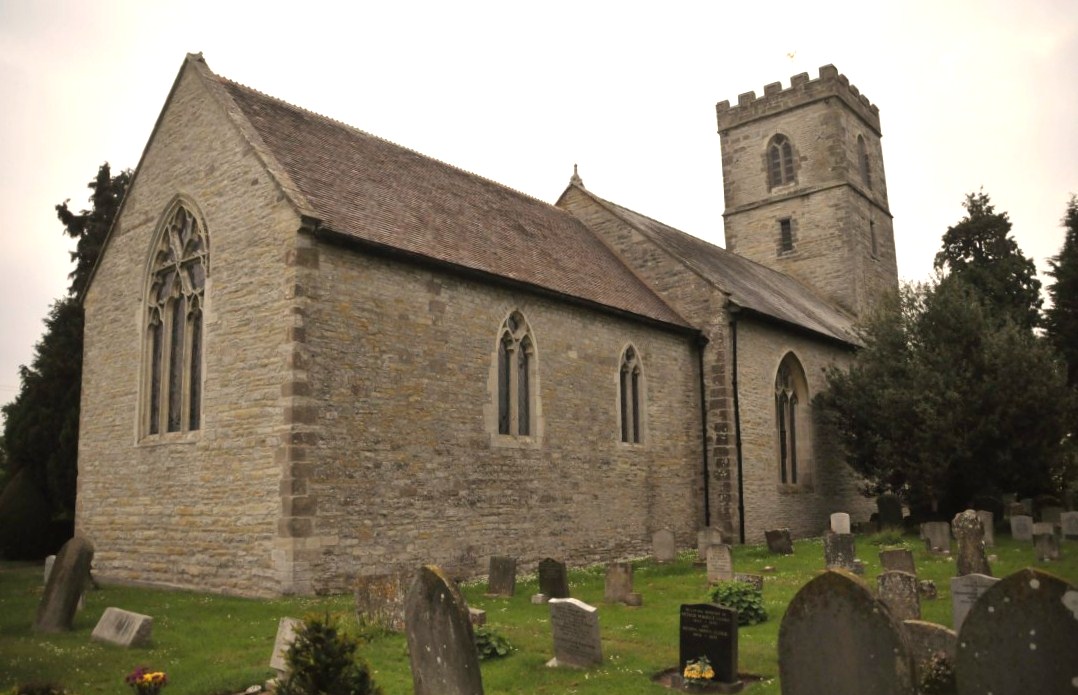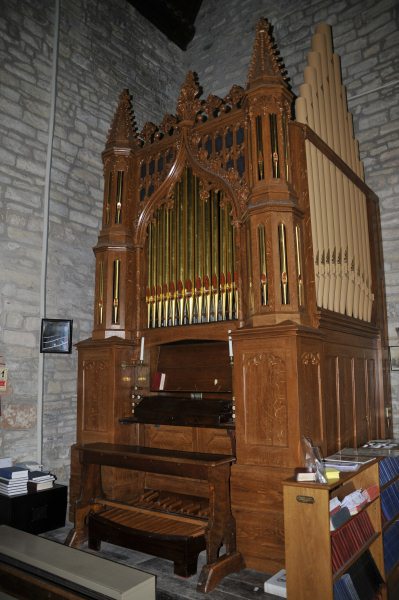Hartpury Church

|
Hartpury
Church
 
The most amazing thing was to find Hartpury Church open, what a wonderful feeling in this day and age that this could happen, a real surprise for us.
Porch and Tower: Entry to the church is through the fine carved oak porch, dating from the 14th century. The stairs in the tower lead to the ringing chamber and belfry. At one time these also gave access to the west gallery in the nave. The door to the cupboard under the stairs is probably original - photo below, crudely built over five hundred years ago.
  The
Bells:
In the tower, the oldest bell is the
4th (10cwt 0qr 14lb) by Henry Jefferies, who was a mid
16th century Bristol founder. In 1544 the church received a bequest
from William Webb ‘To mayntance and
reparacyon of the bellys 12d’,
presumably meaning there were at least two pre-reformation bells. Two bells are
dated 1626, the 3rd (6cwt 3qr 3lb) and the 5th (12cwt),
and one bell, the tenor, 1628 (14cwt 1qr 6lb). John
Pennington, an itinerant founder, known to have cast the 11th at
Gloucester Cathedral in 1626, cast them. The bells were rehung about 1850, by
Isaac Gose of Newent who left space for a treble to make up a ring of
six. In 1901 an appeal for the sixth bell announced that the tenor, ‘a really grand bell for her weight (was) undoubtedly a recast of an older bell (without any additional metal to make up for waste) as she is two or three cwt lighter than she ought to be in proportion to the other bells, but notwithstanding this she is one of the very best bells in the Country, and the whole of the ring if made up to eight bells would be equal, if not superior, to the grand ring at the Cathedral, the musical note being the same (E flat)’. The appeal continued: ‘Last and least comes the treble, quite a youngster among her big sisters, but she is equal to them in tone, which is not to be wondered at as the A.R. on her denotes that she came from the celebrated foundry of Rudhalls at Gloucester. She is very lonely with an empty cradle by her side. When may we expect to see a little stranger to swing in it?’ In 1926 the 2nd bell originally cast by Abraham Rudhall I in 1715, was recast by Gillett and Johnston of Croydon together with a new treble (5cwt 1qr 4lb) finally completing the ring of six bells.
  Inside the nave, in the wall on the right, is the Holy Water Stoup. Whether broken by order of Bishop Hooper in 1550, Cromwell in 1650, or later by vandalism is unknown. These stoups were found near the entrance to a church or chapel, so that those entering could sign themselves with water as an act of self-consecration. In many churches covers were fitted to fonts and secured with padlocks so that the holy water could not be removed or misused. Hartpury’s font has metal staples for padlocks and an oak cover dated 1668, which may have replaced an earlier one destroyed in the Civil War. The font now stands at the back of the church but would have been moved several times before 1882, shortly afterwards it would have been used for the Baptism of the poet F.W. Harvey, most widely known for his poem ‘Ducks’, written in 1917 while he was a prisoner of war in Germany, which illustrates his careful observation and love of the countryside. The font has an octagonal bowl with buttresses flanking the corners of the pedestal. Each face is adorned with tracery similar to the windows in the chancel.
  The
original builders of the organ and its
exceptional case are not known. The instrument was given to the church in 1898,
but was probably built in the first half of that century and has been altered a
number of times over the years. In 2004 a major restoration returned the organ
as closely as possible to the original and restored the case and gilding, during
which decoration was discovered on the pipes, overpainted many years
ago.
 The carved oak chancel screen was controversially erected in 1900. Not everyone approved and in 1967 a faculty was obtained for its removal, which immediately provoked a petition for its retention. Faced with this dilemma, the vicar of the time resolved to do nothing, so the screen remains to this day. The neo-Norman design is of interest using as it does forms of decoration more commonly found in stone than wood. Entering the Chancel through the Norman arch, we passed from the 11th century part of the church to the 14th. On the right is a second pair of windows. The structural design is simple, although the curves of the tracery are becoming more flowing. The southwest window is by Clayton and Bell dates from 1864, while its pair by John Hardman is from 1857.
  This window contains 20th century glass, designed by Roy Comber and installed in 1990. It depicts Christ flanked by Saints Matthew, Mark, Luke and John. The symbolism is of the resurrected figure of Christ triumphant over the cross and earthly miseries, surrounded by the four evangelists. Above the head of Christ is a crown: ‘Be thou faithful until death and I will give you the crown of Life’. The crown leads the eye into the tracery and happily balances with the Alpha and the Omega symbols: I am the first and last, the beginning and the end’. In juxtaposition are the symbols of the Trinity: the hand of God the Father, the dove representing the Holy Spirit, and the lamb seated upon the book of seven seals. The window is a memorial to Miss Margaret Hiam, a benefactor of the church.
 
The brass lamps, hanging over the pews were once the main form of lighting. In 1902, oil for the lamps cost eighteen shillings and the sexton’s duties included cleaning and lighting the lamps and extinguishing them after service.

 ALL
IN ALL A GEM OF A CHURCH, WELL CARED FOR AND MUCH
LOVED |




